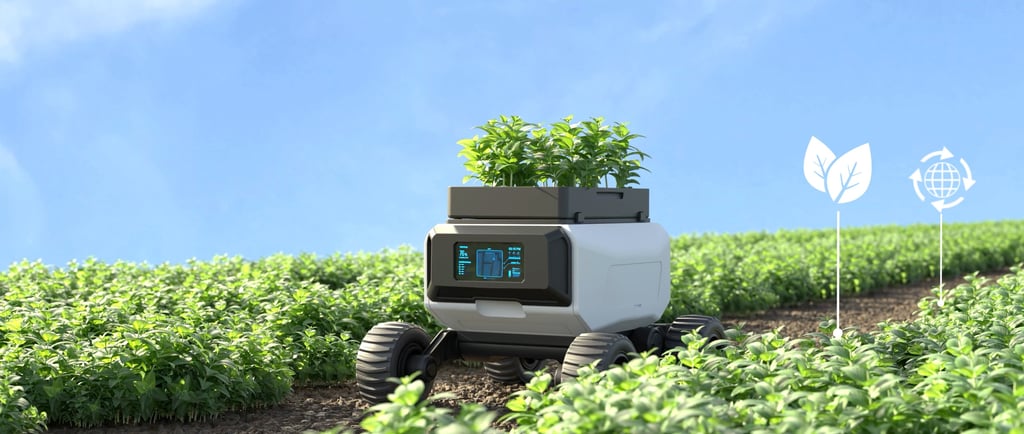Revolutionizing Agriculture: The Impact of IoT on Precision Farming and Smart Irrigation
3/19/20252 min read


Introduction to IoT in Agriculture
The Internet of Things (IoT) has emerged as a groundbreaking technology that is transforming multiple industries, with agriculture being one of the most significant beneficiaries. By integrating IoT in farming practices, we are witnessing the dawn of a new era in agriculture characterized by precision farming and smart irrigation. This innovation not only improves crop yield but also ensures sustainable usage of resources.
Precision Farming: Enhancing Crop Production
Precision farming refers to the use of IoT technologies to monitor crop health, soil quality, and environmental conditions in real-time. Through sophisticated sensors and devices, farmers can gather critical data that informs their decisions regarding planting, fertilization, and pest management. The integration of IoT solutions allows for data-driven farming techniques; thus, reducing waste and maximizing productivity.
For instance, soil moisture sensors transmit continuous data, enabling farmers to apply water only when necessary. This not only conserves water but also prevents over-fertilization and protects the ecosystem. Moreover, drones equipped with high-resolution cameras can capture images of crops, which helps in identifying problems such as nutrient deficiencies or pest infestations swiftly. Consequently, the precision farming approach enhances crop production while minimizing input costs.
Smart Irrigation: A Sustainable Solution
Smart irrigation systems powered by IoT technology represent another significant leap forward in modern agriculture. Traditionally, irrigation practices were based on estimated schedules rather than real-time data, often leading to inefficient water use. Smart irrigation systems, however, utilize sensors and data analytics to optimize water usage based on plant needs and environmental conditions.
These systems can automatically adjust water delivery based on moisture levels, weather forecasts, and evapotranspiration rates. For example, if rain is predicted, the system can delay irrigation, thereby avoiding unnecessary water use. Such a data-driven approach not only helps in conserving water but also plays a vital role in maintaining the health of the water ecosystem. Furthermore, farmers can monitor and control smart irrigation systems remotely through mobile applications, making it easy to ensure their crops are well-watered without a manual presence in the field.
Conclusion: The Future of Agriculture
The convergence of IoT technology with agricultural practices heralds a new era of efficiency and sustainability. Precision farming and smart irrigation are revolutionizing the way farmers operate, granting them greater control over their resources and crops. As IoT continues to evolve, the potential for improving the agricultural landscape is boundless. By adopting these technologies, the farming sector is not only positioned to meet global food demands but is also taking a proactive step towards environmental stewardship. In an age where food security is paramount, the role of IoT in agriculture proves to be a pivotal solution for the challenges that lie ahead.
